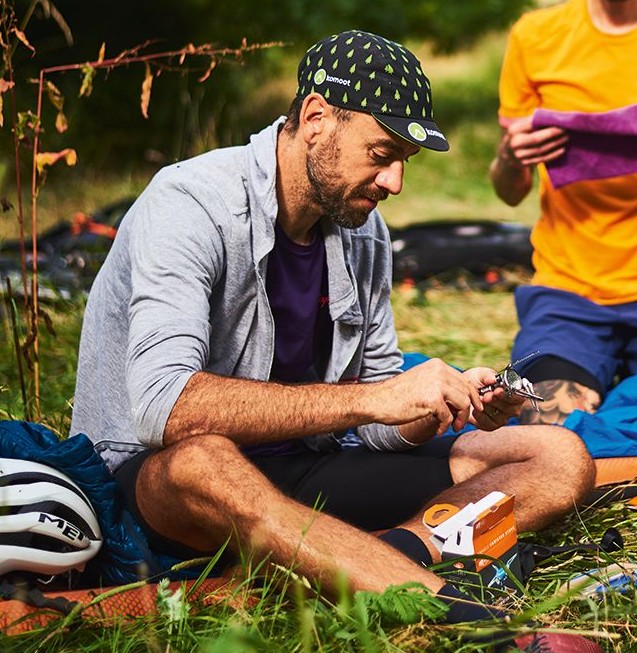There was only one thing for it. The shoes were coming off. I’d been heaving my bike on foot as long as it takes to do an FTP test on my road bike, and at least twice as demoralising.
The day had been a long one and stiff-soled cycling shoes were about as useful as a 10kg weight strapped around my waist.
Earlier that day, there had been promise aplenty. We were in mid-Wales, amid weather that wasn’t quite the mini-heatwave beating down on parts of the country. And that was just fine by us. The route we had planned was a challenge enough without onerous heat to handle, so we were grateful for the hand we were dealt with.
After part one of our Komoot Adventures mini-series, which saw me and Rob Marshall, Komoot’s media manager, tackle an overnight route close to home in the Cotswolds, part two was an opportunity to ramp up the difficulty, testing out how far our Bombtrack bikes – and, for me at least, newly-acquired skills – could take us.
We’d also be venturing further from our homes in south-west England to somewhere completely new. The last ride was mainly road with some gravel thrown in – this time we’d flip that on its head. I was keen to use the skills I’d learned in a demanding off-road environment.
We’d unquestionably find that with the Trans-Cambrian Way.
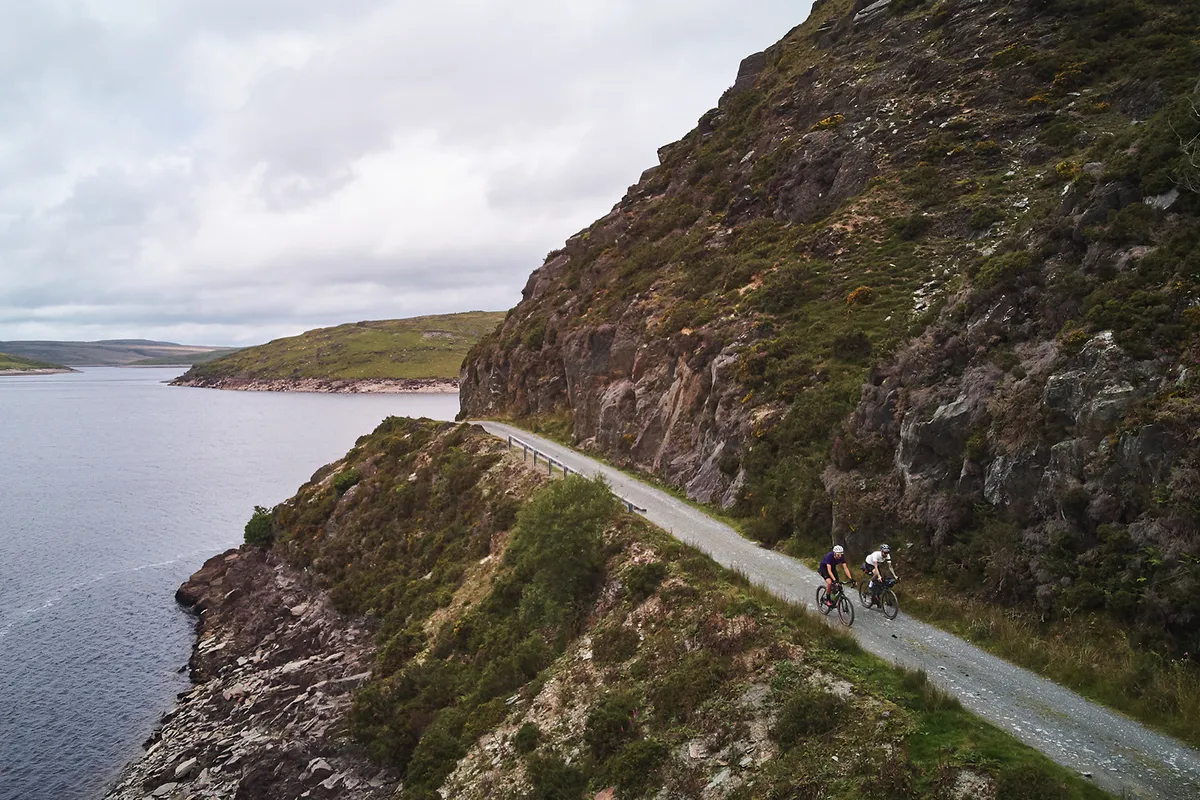
Snaking across mid-Wales from the English border to the coast in a most indirect 175 kilometres, the route is, nominally, one made for mountain bikes, but on an appropriate gravel bike (wide, big tread tyres/possibly some sort of suspension) you’ll still feel, if not quite at home, then certainly in a neat, well-provisioned Airbnb.
To do the whole Trans-Cambrian route would have been stretching the concept of gravel riding, so for our two-day loop we’d make it an integral feature, while also including part of the largely tarmac National Cycle Network Route 8, which runs top to bottom through Wales, from Anglesey to Cardiff.
Water world
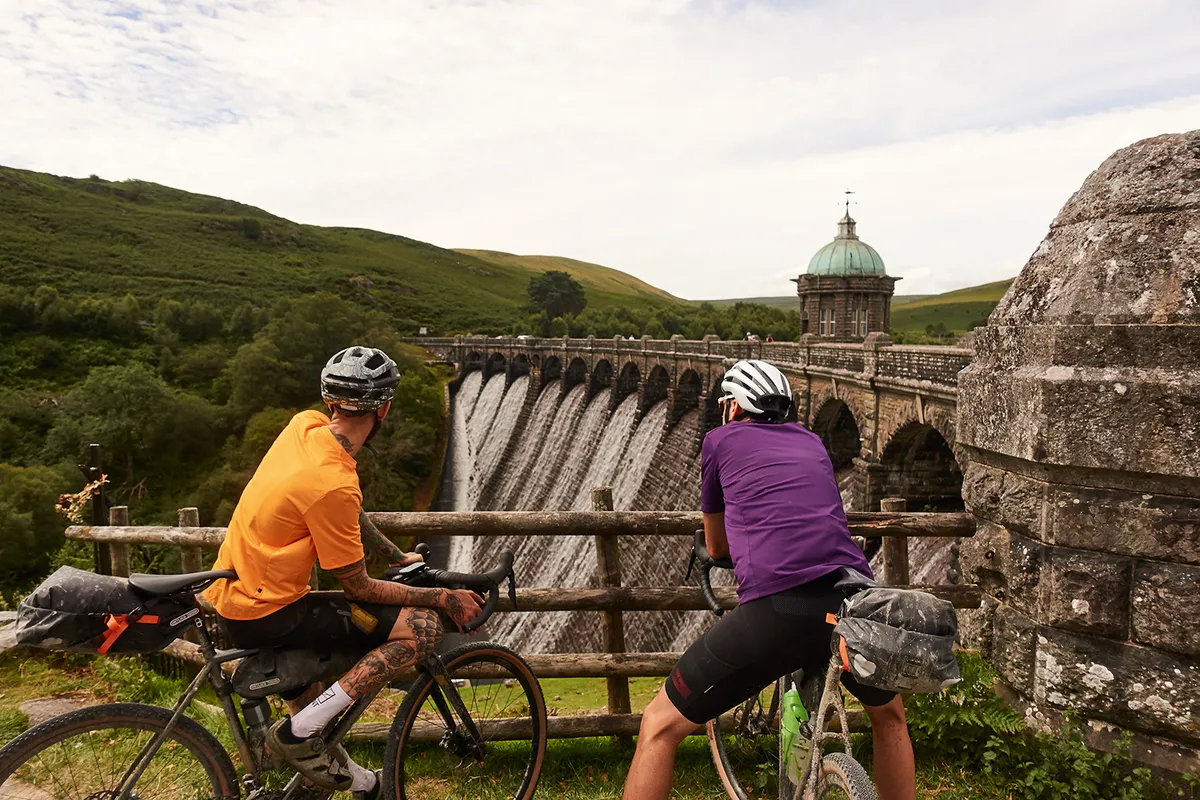
To include both we’d start and finish in the market town of Rhayader, close to the Elan Valley’s collection of humongous reservoirs and dams, which supply Birmingham with its water.
It’s amazing how something with such an industrial function can also double up as stunning scenery. Like last time, I was joined by Rob and Joe Branston, intrepid photographer, who would once again attempt to ride the entire 154km route with a posture-compromising camera bag on his back. I can only conclude that he has a spine made of steel.
Adrian's bike | Bombtrack Hook EXT-C
- Price: £3,050
- Frame: Carbon
- Fork: Carbon, triple cage mounts
- Groupset: SRAM Rival 1x11, 40t chainring, 11-42t cassette, hydraulic disc brakes
- Wheels: Hunt Adventure Sport 27.5in wheels, WTB Venture 2in tyres
- Finishing kit: PRO saddle, CX-10 bar, Roam stem
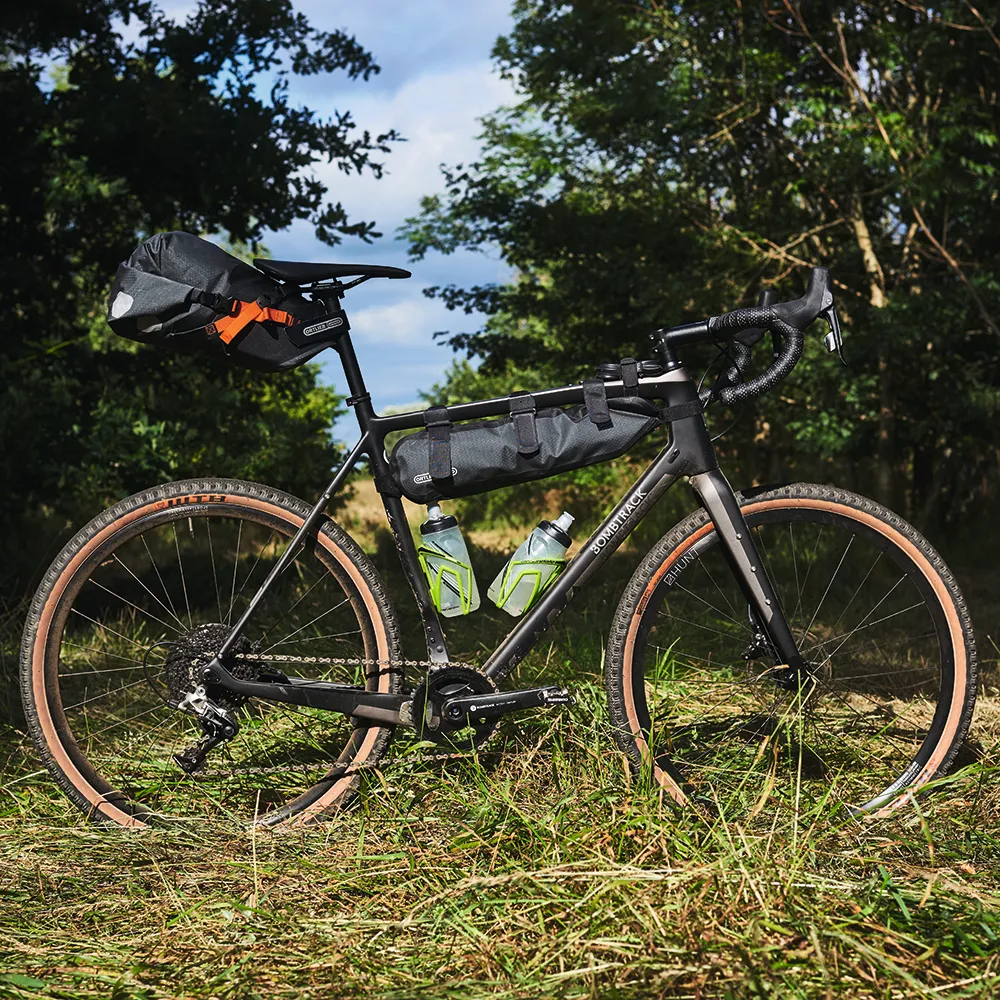
After a coffee in the Caban-coch reservoir’s visitor centre we were, in short order, catapulted from all vestiges of civilisation into Welsh wilderness, with very few villages left on the route until we returned the following evening.
We were carrying everything we’d need, though a further coffee or two further down the track wouldn’t have gone amiss. That said, unlike the last adventure, there’d be no wild camping this time around, nor would we be braving it in the two bothy shelters on our route. Instead, we’d booked into a warm, dry pub for our night on the road. It would prove a sage decision soon enough.
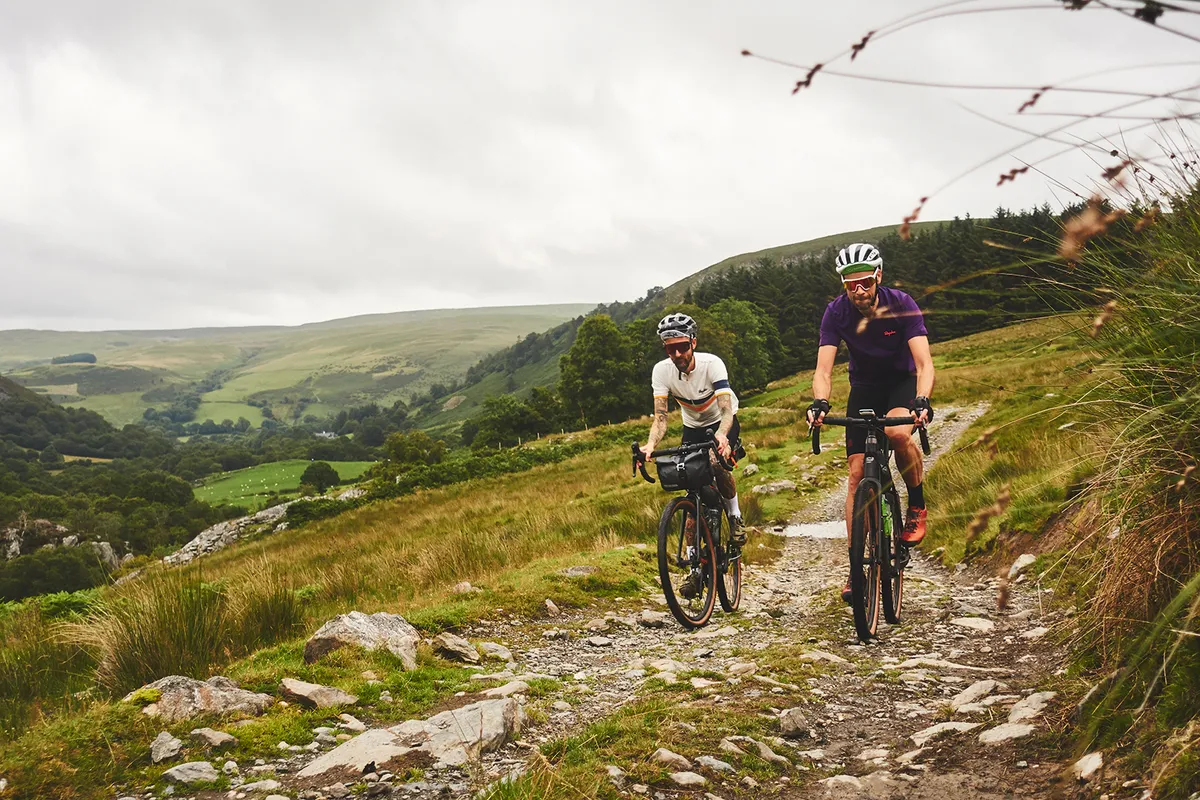
The step-up in difficulty from our Cotswolds route was immediately apparent, with progress achingly slow. Terrain was always varied, with regular river crossings and hike-a-bike sections keeping us honest. If I was here to seek out my limits, I had failed, for at times, I was well beyond them! I’d say I was a fish out of water, but for it being a phrase that struck too close to home, given all the rivers we’d had to wade through.
Rocks of all sizes were strewn across the trail, killing any speed we built up. It was no hassle for Rob, who brought with him a background in mountain bike racing and, indeed, experience in all things two-wheeled. Joe and I on the other hand…
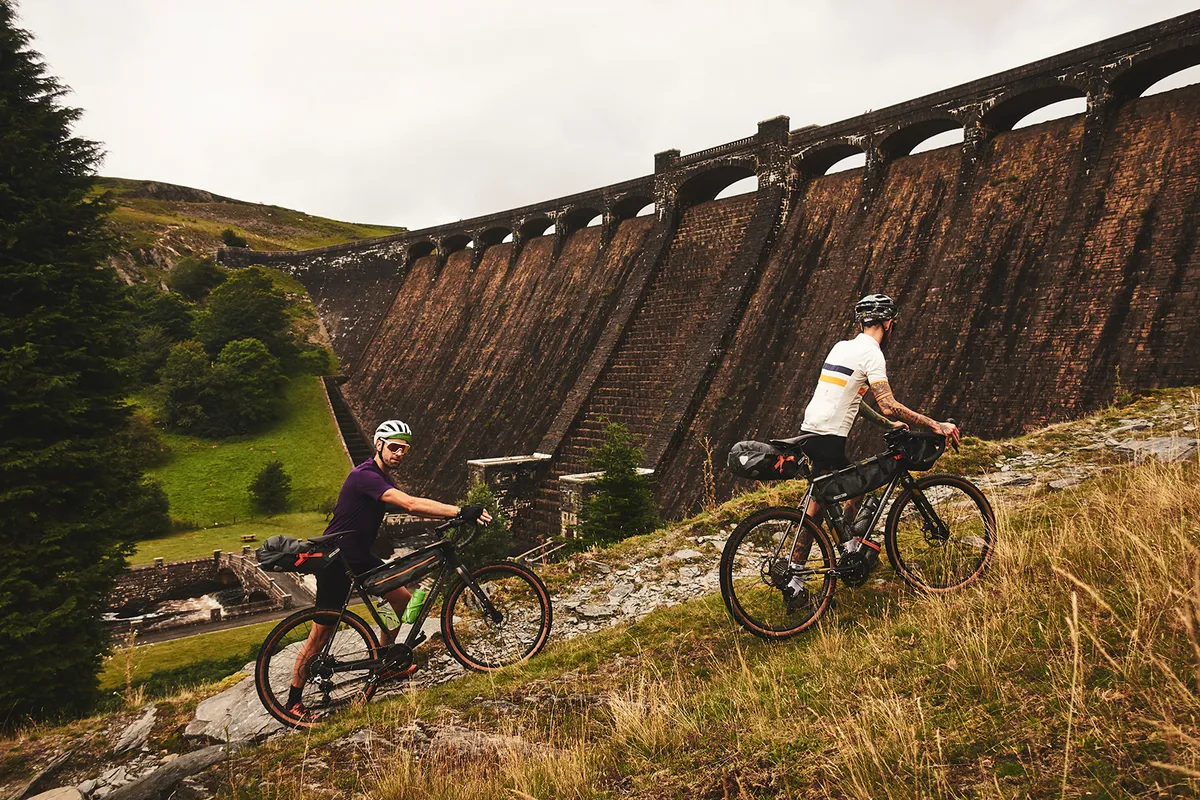
Rob managed to not put a foot down, whereas we must have looked, to any passers-by, as though we were out taking our bikes for a walk. But watching him seemed to rub off on us, and over the following hours of day one, our confidence showed signs of green shoots, and our boundaries and knowledge for this type of riding felt like it was expanding.
A crossing to bear
It doesn’t take too long before you start to realise what you can cross on your bike – and what you can’t. Small streams can be tackled with a decent amount of speed, providing you stick to your line, but faster-flowing rivers demand further inspection before you commit to anything rash.
I’ve fallen foul of ford crossings on my road bike before, so needless to say that walking is now my first option, even if theoretically my gravel bike would make light work of it. Rob would almost always try to pedal across a river, but having watched even someone like him, with bags of knowledge and experience, slip and slide over treacherous rocks, then walking, despite all the obvious downsides, was still my preferred option. For me, at least, it’s a toss-up between a guaranteed soaking of your feet or a possible whole body dunking.
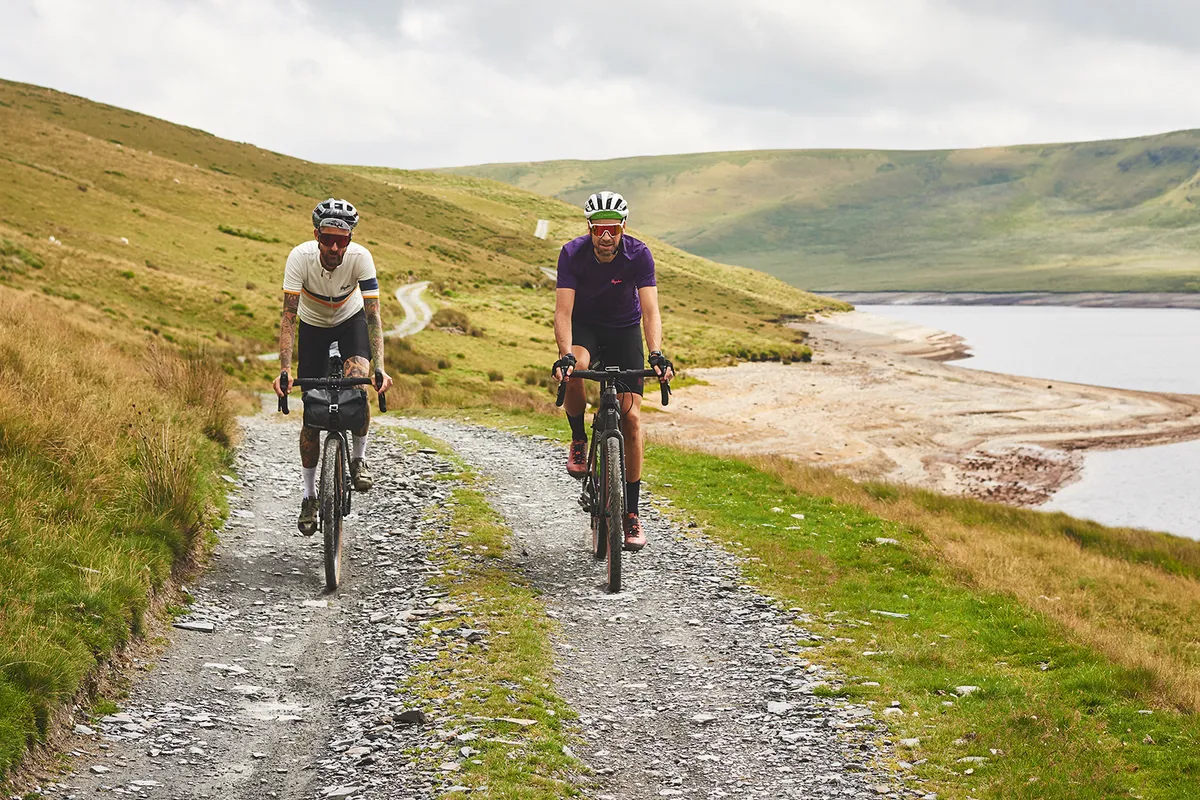
We survived some of the hardest riding of my limited gravel adventures and got rewarded with some friendlier sections that made the novel choice of travelling around several stretches of water. Away from villages and other people, we felt true isolation in the best possible sense, and could palpably feel our confidence soaring.
Speed freaks
Speed is a two-headed beast. Sometimes it’s exhilarating but when you reach what you believe to be your limit your brain changes tack, flipping from terrific to terrifying. If only you could switch off that side of your brain, training yourself to relish the higher speeds and crave the danger.
Speed is one thing on the road, but at least you can have confidence in the surface. Speed off-road heightens the issues – touching the brakes doesn’t always mean a regaining of control. Quite the opposite.
Rob's bike | Bombtrack Audax
- Price: £2,600
- Frame: Steel
- Fork: Carbon
- Groupset: Shimano 105 hydraulic disc brakes, 48/32t chainset, 11-32t cassette, Shimano Ultegra front and rear derailleur
- Wheels: Hunt Adventure Sport 650b wheels, WTB Byway 47mm front tyre, WTB Horizon 47mm rear tyre
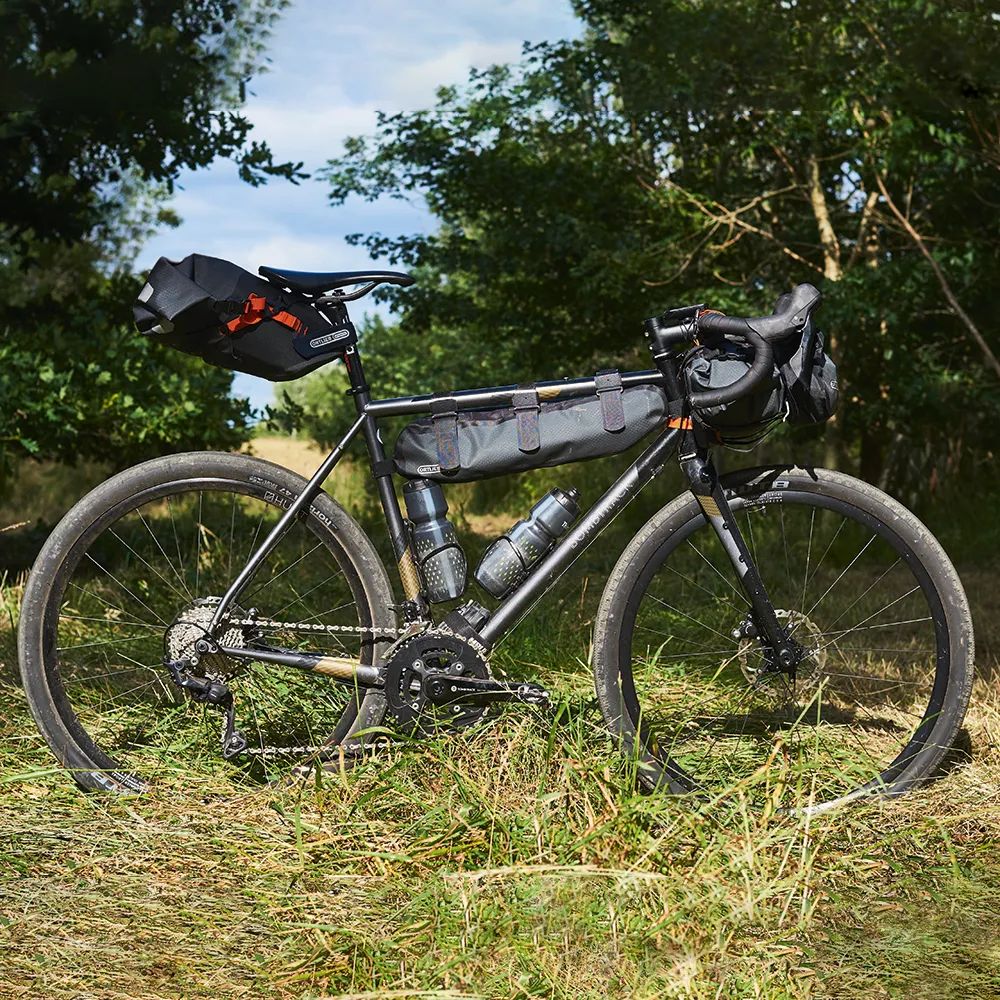
But as the day wore on I better understood my bike, and speed and enjoyment increased the deeper we went into rural Wales.
For Joe, however, it was hard to make that same assessment, particularly with the extra weight he was carrying on his back, which by this point was taking its toll. I’m sure he won’t mind me sharing his time-out at the top of one climb, where he, how can I best put this... untethered himself from his digesting lunch.
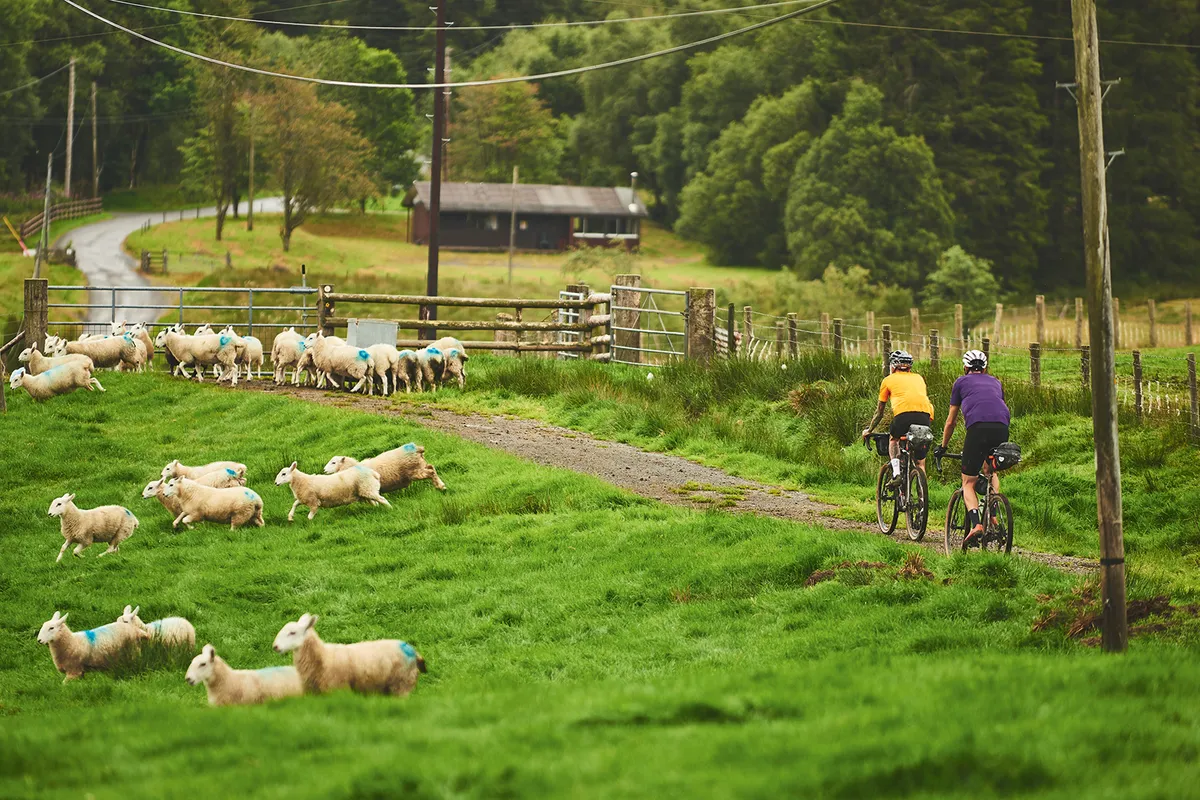
Given the tough, varied terrain, there was much chat all day about what gravel riding in Britain actually is.
The thrust of Rob’s point is that any off-road ride here means there will be sections where you must jump off and push, and that if you set out with that mindset then you will have a much better time of it.
I’d come to accept this way of thinking. Having come from the road, and having very much a performance-related outlook on the sport, you really do need to park it at the door on your way out when it comes to gravel. It took me some time to adjust to this slower pace and new style, and though I’m by no means there yet, I am learning to adapt.
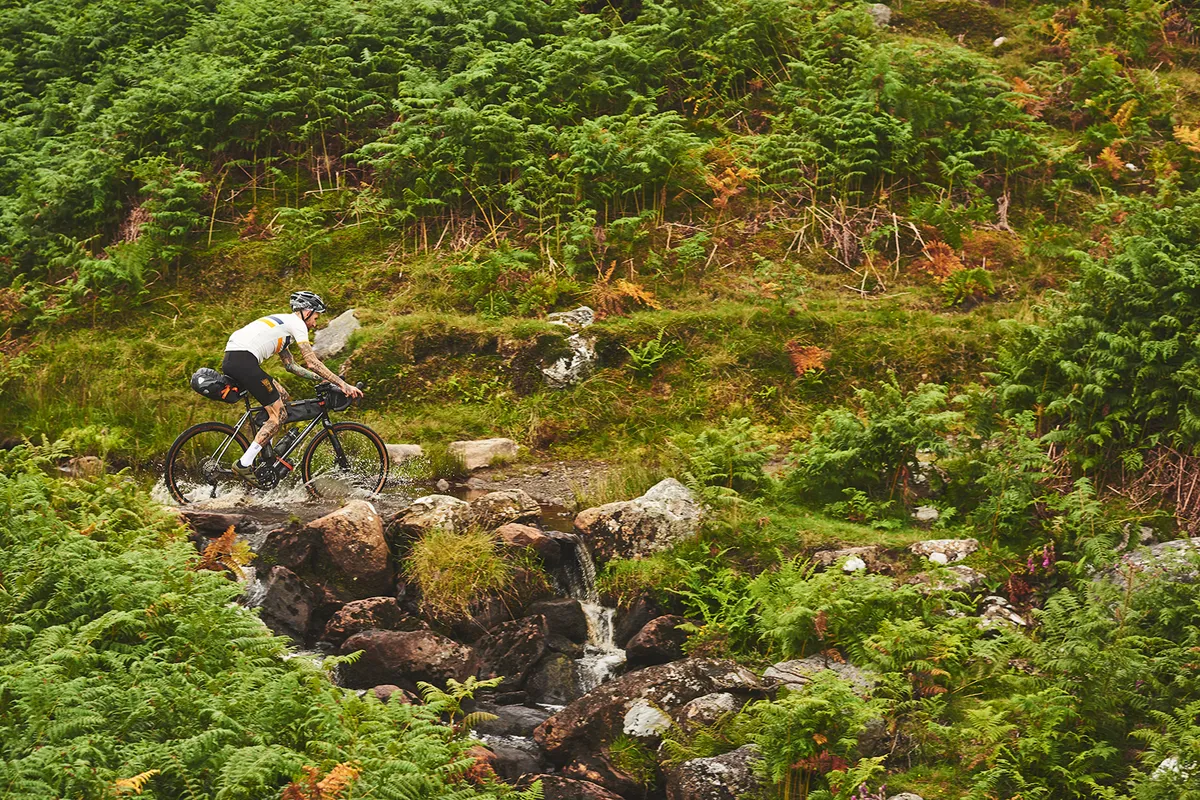
Such open-mindedness evaporated, however, on the final climb of day one.
My computer initially told me we had a 10 per cent climb to negotiate over 3km. Demanding enough, but it then increased to 15 per cent over 2km, then 20 per cent one 1km. We were back on the Trans-Cambrian Way, with our route pointing us straight up and over a mountain. Not a switchback to be found here.
The weather was closing in, misty and murky as the three of us trudged up an unerring hill, with the gradient going all the way to 30 per cent – not the numbers you want to see after eight hours in (and often out) of the saddle. The higher we got the steeper it felt as grass turned into rock, which gave way underfoot. Only electric assistance would have got us up without pushing.
Fortunately, the descent was smooth and winding, a delicious dessert after a rotten main. On reaching our lodgings, we’d wash it all down with several hard-won pints.
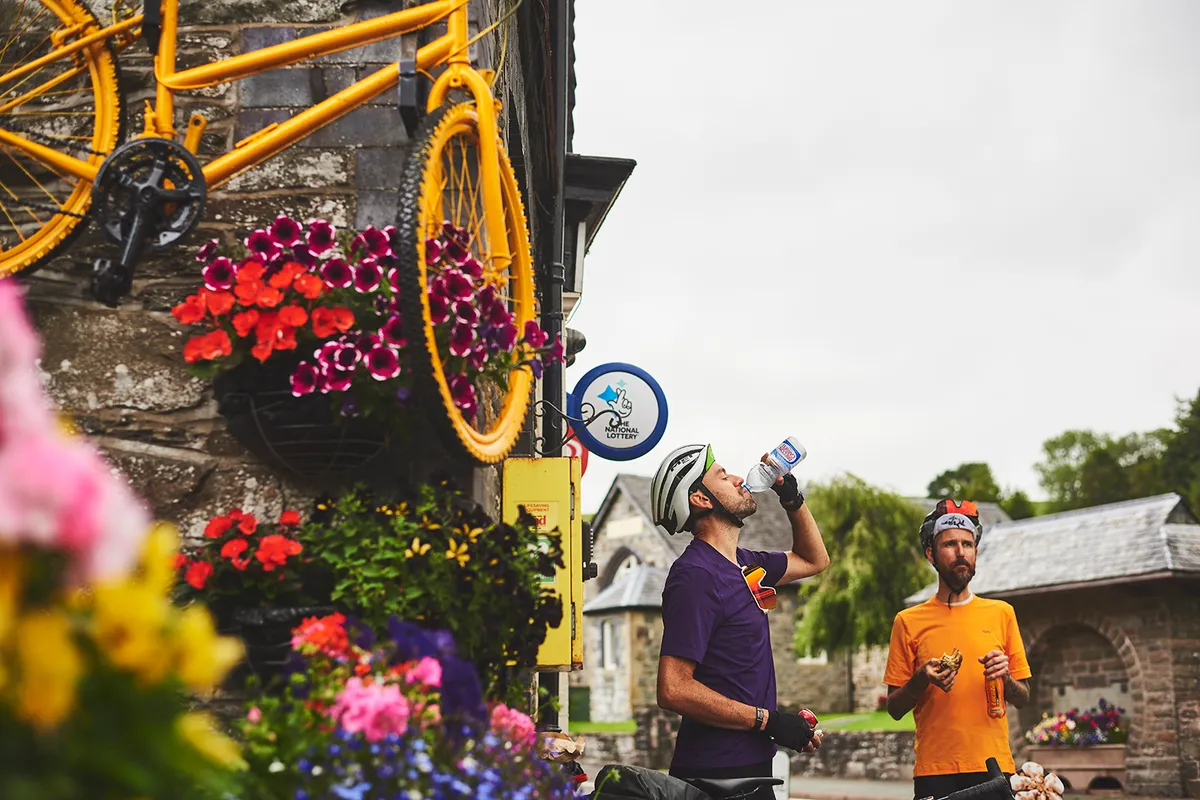
Take two
Day two saw us setting off in dirty and slightly damp kit, but no matter – we were well into the groove of the ride by now.
We opened on NCN 8, which made for much faster progress, trundling over hills and through valleys. We even found a shop to refill our depleted food reserves and chat about our final adventure to come.
Although there is no shame in choosing a pub for our overnight stay, I had unfinished business with wild camping. We decided our next ride would be unsupported and self-sufficient, maybe knocking back the extreme terrain but ramping up the wilderness. We decided on the Scottish Highlands and began plotting our route.
As we continued the final leg of this ride back to the Elan Valley it felt like we were riding back towards civilisation, encountering more cyclists enjoying the sunshine.
Traditional cycle tourers, mountain bikers, ebiking groups, all appreciating the tranquil surroundings that Wales has in spades.
How to plan your bikepacking adventure on Komoot
- Map overlays: Switch to Google satellite and zoom in to check out wild camping spots.
- Fitness type: Drop your Komoot fitness type to get a better idea of the estimated duration for your ride once you have a fully-loaded bike with all your bikepacking kit.
- Offline maps: Download Komoot map regions while at home so you have them on your phone ready to use when out on the ride without any concerns about phone data. Try navigating with Komoot in ‘flight mode’ to save your phone battery.
- Search bar and points of interest: Click on the Komoot route planner search bar to add points of interest and services to the map. You can then either include these in your route or, if you are already on the road, you can navigate directly to them.
- POI: Includes churches, which often have outside taps that can be used for refilling water bottles, public transport, bike shops and camping grounds
- GPS devices: If needed you can re-plan on the go and easily add any new routes to your computer by syncing with your GPS device.
- Trans-Cambrian Way: To download the full route, visit Komoot

